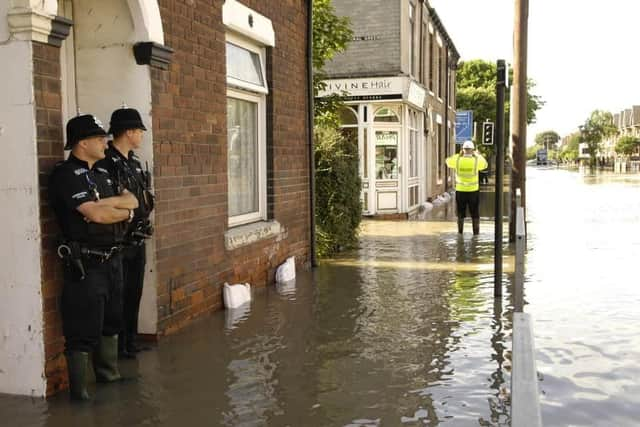The Government needs to act as more and more homes are at risk of flooding - Emma Hardy
The vast majority of properties being built today are not fit for the future, while people in existing properties lack the means to make the improvements needed. This leaves millions at the mercy of the devastating effects of flooding. This cannot be allowed to continue; we need new building regulations and a national scheme to improve existing housing to the necessary standards as a matter of urgency.
In February I attended two round tables on flooding. Without exception, everyone at both those roundtables had the same expectations on the growing threat of flooding and the same frustrations on the lack of acknowledgement from the government and concrete progress in enabling the necessary changes.
Advertisement
Hide AdAdvertisement
Hide AdThere have been signs of movement. After a delay of over eight years, Section 3 of the 2010 Water and Drainage Act is set to be implemented. This makes Sustainable Drainage Systems (SuDs), which address surface water runoff, mandatory on new developments and sets national standards for them. The latest revision of the Department for Levelling Up, Housing and Communities’ Guidance on Flooding and Coastal Change Planning Guidance now accepts the inevitability of “managed retreat” in the face of sea-level rise. But these are baby-steps.


The UK has the oldest housing stock in Europe. An estimated 29 million homes will need to be retrofitted to meet the standards necessary to reduce carbon emissions and meet net zero targets. This will make them more energy efficient: warmer in the winter and cooler in the summer. Of these, 2.6 million are at risk of flooding. Again, the vast majority of these will need adaptations to make them more flood resistant and resilient.
To compound these problems, there is no requirement on properties being built today to meet these requirements on energy efficiency or flood resilience. Consequently only a tiny minority do. This means the number of homes which require retrofitting, including flood protections, is growing, not shrinking. I find it hard to understand the inaction of those in government in the face of this situation.
If Whitehall has its head in the sand, the same is not true for the financial sector. At the Treasury Select Committee on which I sit, we heard powerful evidence from Matt Hammersmith, CEO of Barclays Bank, that flood risk will begin to affect the valuations mortgage lenders attach to properties, and as those risks increase, valuations will fall.
Advertisement
Hide AdAdvertisement
Hide AdWithout further action some homes being built today will be uninsurable in the future.
Most of Hull lies below the high water mark. In 2007, incredibly heavy rainfall saw over 10,000 properties damaged and 6,300 people forced into temporary accommodation.
In 2013 a tidal storm surge over-topped flood defences in parts of the city centre damaging 250 properties. I have witnessed first hand the devastation, disruption and financial cost of flooding.
We cannot allow our country to sleepwalk into more events like these.
Emma Hardy is the Labour MP for Kingston upon Hull West and Hessle.